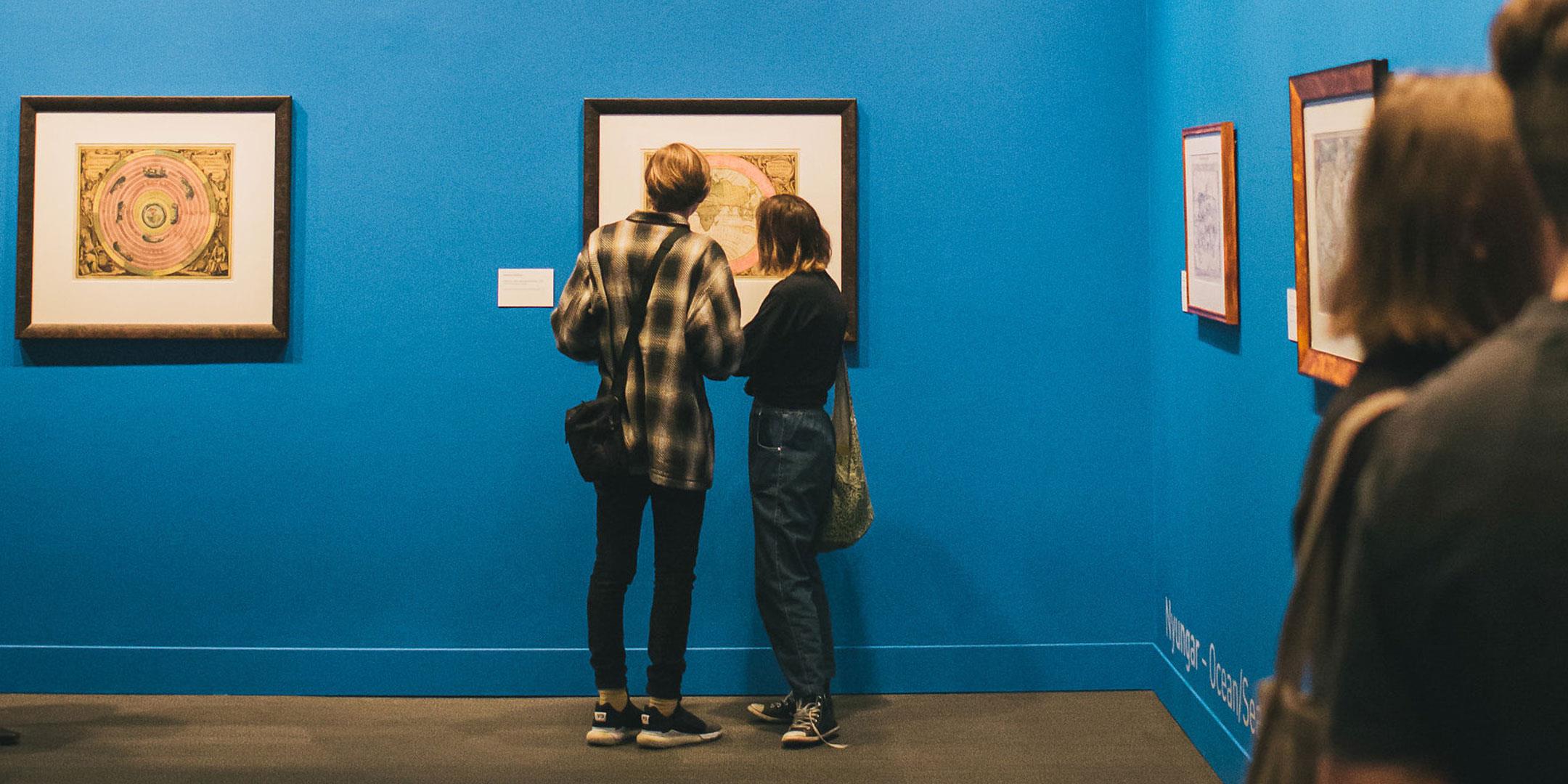Featured Exhibitions:
Works of Art from Warburton, a Berndt Museum Exhibition: 11 February – 1 July 2017
The Likeness, 100 Years of Portraiture from The Cruthers Collection of Women’s Art: 11 February – 8 July 2017
Helen Britton, Interstices: 11 February – 15 April 2017
The Culture Club at the Lawrence Wilson Art Gallery was a non-event. Not quite sure what to expect from the self-described “art party”, I went along slightly unsure of what I might encounter, expecting at the very least a large level of participant involvement. But in what? However, it turns out that despite a few tables with glasses and bottles of wine and juice free for our consumption, The Culture Club is really an excuse to get more people through the doors of the Lawrence Wilson. The event did have interactive art elements as promised, although the table at the entrance to the gallery was more reminiscent of a schoolroom craft table than anything else. A technological interactive piece was set up where the participant wore a virtual-reality mask and drew their way through their virtual space, the fluid abstractions shown on screen for the crowd to watch and enjoy. The involvement in this part of the event seemed quite a success, even if the virtual reality was paired with questionable music choices.
The most enjoyable part of the Culture Club for me was wandering through the three excellent exhibitions the Lawrence Wilson is currently showing, the first of which was Works of Art from Warburton. This exhibition, presented by the Berndt Museum, showcases works produced in Warburton. The beautiful imagery and vibrant colours, coupled with an excellent lighting arrangement, made the works look like they were glowing from within. While the pieces were nothing short of mesmerising to look at, I do wonder whether perhaps some form of information dissemination may have been beneficial to those like myself who lack the cultural knowledge to competently interpret the works. In the exhibition catalogue, Dr Vanessa Russ writes that “these works of art clearly demonstrate a depth of culture that is sometimes invisible to the outsider, but full of historical and contemporary references that continue to give great value and meaning to their community today.” Perhaps for an exhibition designed to show the extensive Warburton collection off Country, text accompanying the pieces may have shed valuable light upon cultural traditions underpinning them.
Unfortunately, despite the brilliant appearance of the works from Warburton, the exhibition has fallen into the trap of exhibiting works by Aboriginal artists in a distinctly ethnographic fashion; a darkly lit room with illuminated objects, reminiscent of the ultimate example of poor museum design: the Musée du Quai Branly in Paris. Such presentation undermines the works and presents them as a form of mysterious Other. Contrary to this, the rest of the works presented in the Lawrence Wilson were exhibited in a much more distinct White Cube fashion, suggesting an inherent difference between High Art and ethnographic material which we surely past in 2017.
The exhibitions of portraits in The Likeness, put on by the Cruthers Collection of Women’s Art, displayed portraits and self-portraits of women from 1906 to 2009. This presented a particularly fascinating progression of identity and self-concept with in a society in flux and within the sphere of artistic tradition. With such a small exhibition, however, I found it hard to become immersed; emotional involvement is limited as it is over so quickly.
The final exhibition, Helen Burton’s Interstices, was the showing I enjoyed the most. Not expecting to enjoy an exhibition about jewellery and crafted forms, Burton’s work was incredibly immersive, and succeeded in bringing out the extraordinary from the everyday. Unheimlich: The Ghost Train balanced on the line between the familiar and homely in the form of a children’s model train arrangement and the childlike depiction of a black and red eel as the train. It moved along the model in a disjointed fashion so evocative of an eel’s movement that I felt distinctly unsettled as its grinning face passed by. The process behind Helen’s work was revealed in a conjunction with the exhibition, where her sketchbooks, designs and paintings were exhibited, providing an excellent insight into the artistic process. Britton proves an un-categorisable artist, her painted forms finding expression in her crafted works, and the lines between mediums blurred.
For what The Culture Club was attempting to do – garner more interest than the Lawrence Wilson typically sees – it was a success. The exhibitions presented were exciting and full of vim. As for the event itself, the “art party”was the kind of party where everyone had left by 8 o’clock.
Words by Karl Frederick Sagrabb.

